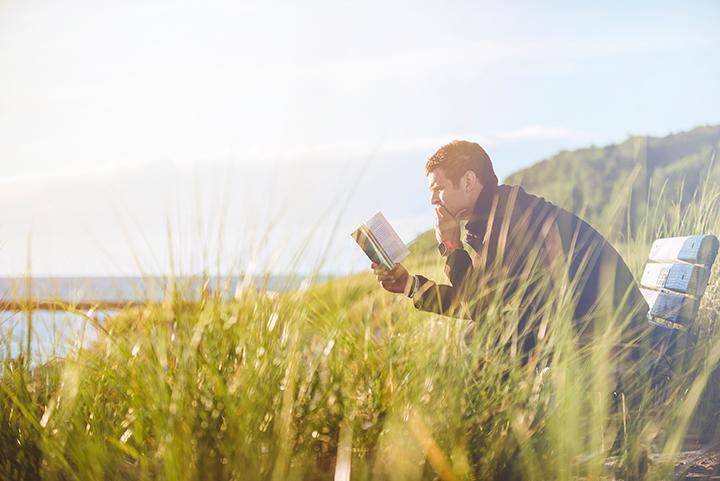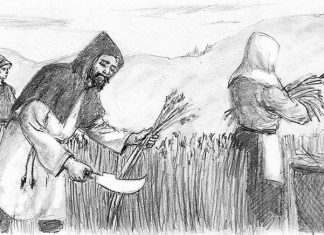| By Amy E. Peare | |
| Issue #96 • November/December, 2005 |
Most parents want to see their children well equipped to succeed in life, and homesteaders are no different in that regard. Many homesteaders choose this lifestyle to give their children a better chance at a wholesome start. Another tool we can give our children is the love of books. Reading strengthens minds and hearts, and widens horizons.
While some kids have a predisposition for reading, others need constant encouragement to read. This encouragement is not a difficult thing to implement in your family. It takes only a half an hour a day, or more if you wish.
First of all, show your kids reading is important to you. This is not something that you can simply tell them. They must see you reading for enjoyment and information purposes.
Second, limit the T.V. you let them watch. Television is passive entertainment. Kids can’t interact with the television. They are being bottle-fed their information and entertainment, and it is difficult, if not impossible, to sift out the good from the bad in that form. We keep our television in our shed, only watching it on special occasions.

Third, make books available. Buy books for birthdays and Christmas, or whatever holidays your family celebrates. Buy books as rewards for good behavior or good report cards, or any other time a gift is appropriate. Books are wonderful entertainment, less expensive than a movie or video game or the latest do-everything-for-you toy. If money is tight, make frequent trips to the library and utilize the inter-library loan system.
Fourth, read to your kids daily for at least 20 minutes. Find books that are fun and interesting to both you and your children. Not only does this encourage your children to read, it creates a stronger bond between you. Some of my fondest childhood memories are of my mother reading to my sisters and me.
Fifth, encourage your kids to read on their own. If they have a question, look up the answer together and have your child read it out loud to you. If your child is bored or ill, give them an adventure novel.
I will probably not get agreement from every parent who reads this article on this point, but if your kids want to stay up late reading, let them. If they share a room with others, let them have a flashlight or a small book light so they don’t disturb their siblings, but sometimes it is good to get through the exciting bits of a story in one sitting.
Now that you have the steps of encouragement, finding the books is the next step. It is very important that the right books are chosen, but it isn’t difficult with the tens of thousands of great books out there on every subject!
First, talk to your children about their interests. Very small children usually love what their parents or those close to them are interested in. So if you love animals, picture books on animals will be a good start, especially as you are more likely to be more animated in your reading to them. (Quick note heredo the funny voices. Kids LOVE it, and there is no one there to hear but them. Don’t be embarrassed, just go with it.) Older kids will be able to articulate their own developing interests, and you can go from there.
Second, talk to your librarian or bookseller if you are unsure what to choose. They can guide you to the best books within your child’s interests, both new books and the classics. For older children, the Newbery award winning books and ALA notables are a great place to start. These books are usually the best of the best.
Third, assess your child’s reading level. You don’t usually give a novel to an eight year old, but every child is unique, and what may be appropriate for one child may not be for another. Don’t be afraid to buy a twelve year old a picture book if they are not ready for a novel, but don’t hold back your eight year old if he is ready for a novel. Pushing a child too far and too fast or holding them back from what they are capable of are equally frustrating for a child. Let them set their own pace when it comes to reading, since you are striving to teach them the enjoyment of books.
Fourth, review your child’s books yourself before allowing the kids to read them. Some young adult and even middle grade books have themes that your child may not be emotionally ready for, and many books may run against your family’s religious beliefs.
Fifth, discuss the books your children read. This will help you to assess their changing reading level, to see if they are comprehending their reading, and to let them know you care about their reading interests.
Sixth, don’t be concerned if your child fixates on a single author. Kids do that and so do many adults. They may have found a style of writing that resonates with them or subject matter that is stirring. Usually, once a kid has read everything by that author, they will move on to another. In my own life, I have fixated on different authors at different times, starting with Tolkien, moving on to C.S. Lewis, Robin McKinley, and so on down the line. As long as the writing is good, you have nothing to worry about.
The books in our home reflect who we are as people. My husband and I have many books on the various practical arts associated with homesteading, but we also have a deep love for science fiction and fantasy, as well as classic books from Dickens to Plato and most everything in between. Our children’s books are a similar mix, chosen carefully to help them develop strong minds and still have fun.
A small sampling of the books we have may help you choose some to get your own family going. I highly recommend the books listed below.
Picture Books for Young Children: Wool Gathering: A Sheep Family Reunion by Lisa Wheeler. This is a book of short, humorous poems about a family of sheep.
Iron Horses and Covered Wagons and Bumpy Trails by Verla Kay. These books are written in cryptic rhyme and the subject matter is carefully researched by the author. Verla Kay has many picture books out, all on American History themes, and are a must have for any homeschooler’s library.
When Moon Fell Down by Linda Smith. This is a sweet bedtime book for young children. Also, part of the proceeds raised by the sale of the book go to benefit breast cancer research in memory of the author.
Another favorite bedtime story is Bear Snores On by Karma Wilson.
The Three Little Puppies and The Big, Bad Flea by Ted Lish, illustrated by Charles Jordan, is a unique retelling of the Three Little Pigs story and will have you laughing out loud. Plus, Charles has cleverly hidden six elves within the book’s illustrations, which are fun to try to find.
For older childrenSee Saw Girl, The Kite Fighters, A Single Shard, and When My Name was Keoko by Linda Sue Park, are all lovely novels about Korean children throughout history. A Single Shard was 2002’s Newbery winner.
The Folk Keeper by Frannie Billingsley, a children’s fantasy novel that was so exquisitely written, it blew me away. If you like Celtic myth, this is a great book.
Rain is Not My Indian Name by Cynthia Letich Smith is a book about a young girl struggling with her heritage and the death of a close friend. This book could lead older kids into thoughtful discussion about the issues it handles.
Dahling If You Love Me Would You Please, Please Smile by Ruksahna Khan, another book of a child struggling with who she is in society. This book can be an eye opener on what it is to be a Muslim in a society that doesn’t understand, but that isn’t the total focus of the book. It is a fun read, too.
Lloyd Alexander’s many books are much loved here. These include the Prydain Chronicles, the Vesper Holly series, and many, many more titles.
If I were to try to list all our favorite children’s books here, it would be a book in and of itself, but hopefully this will give those who need it a good start on finding something to spark your kids’ interests. Enjoy your books.














